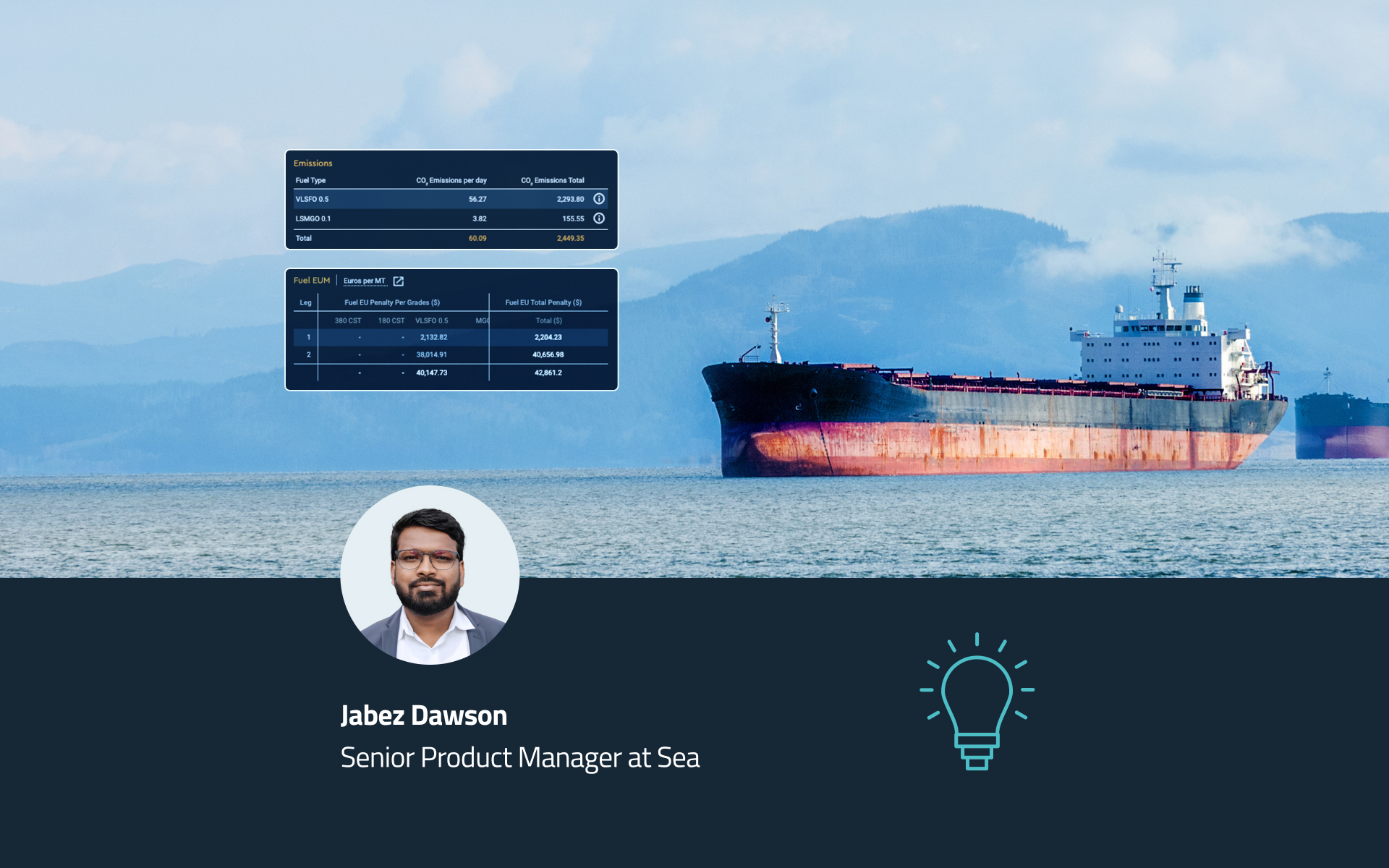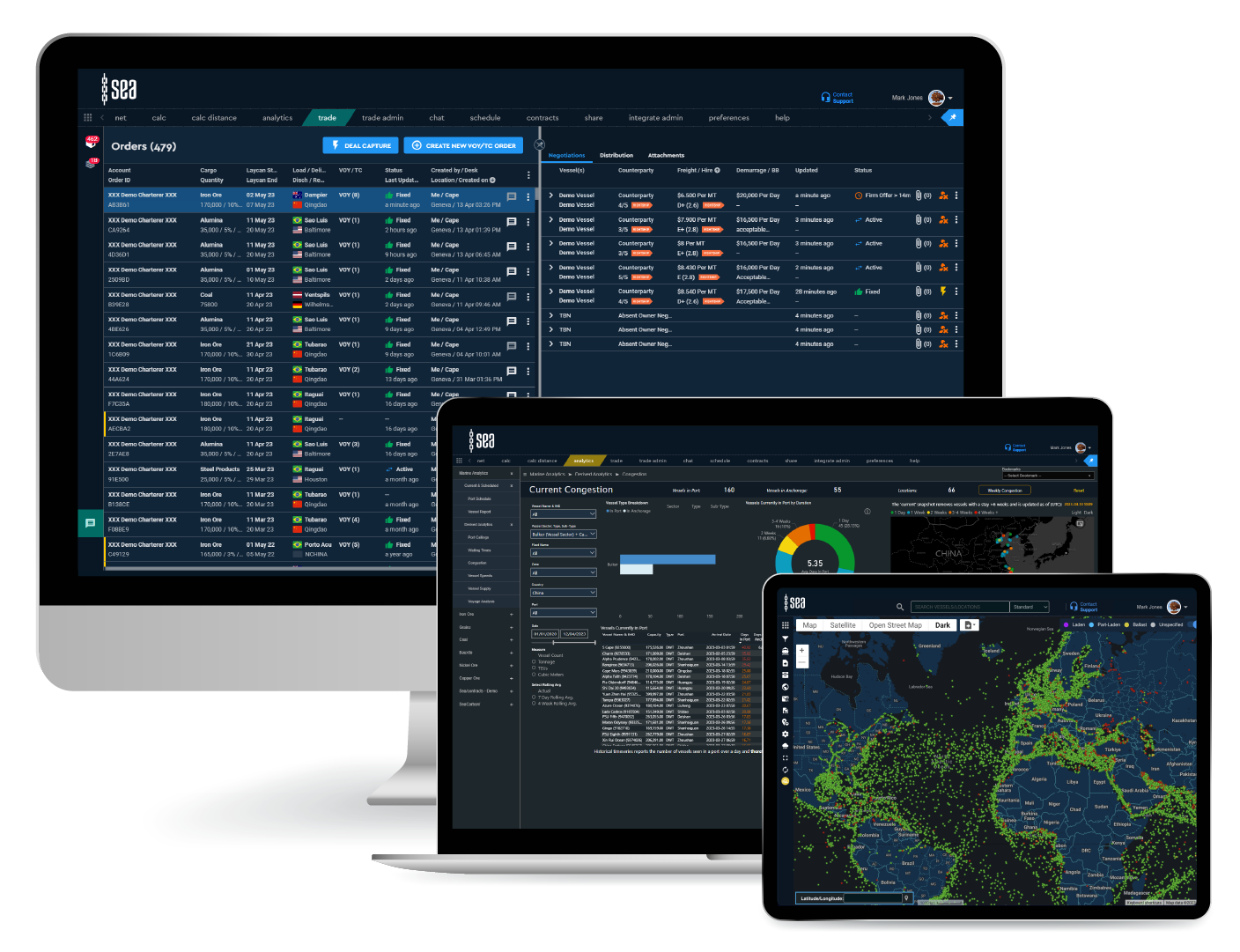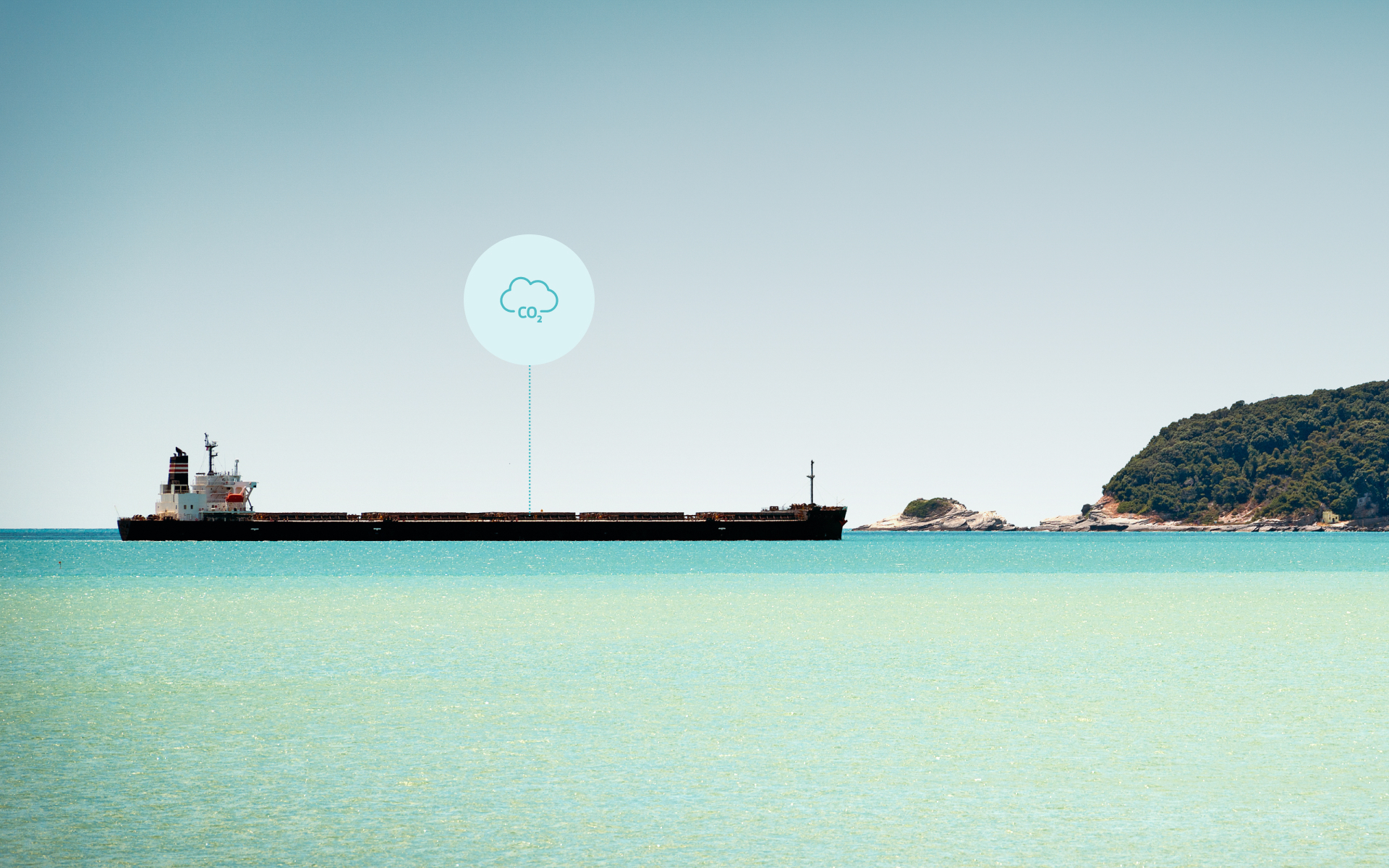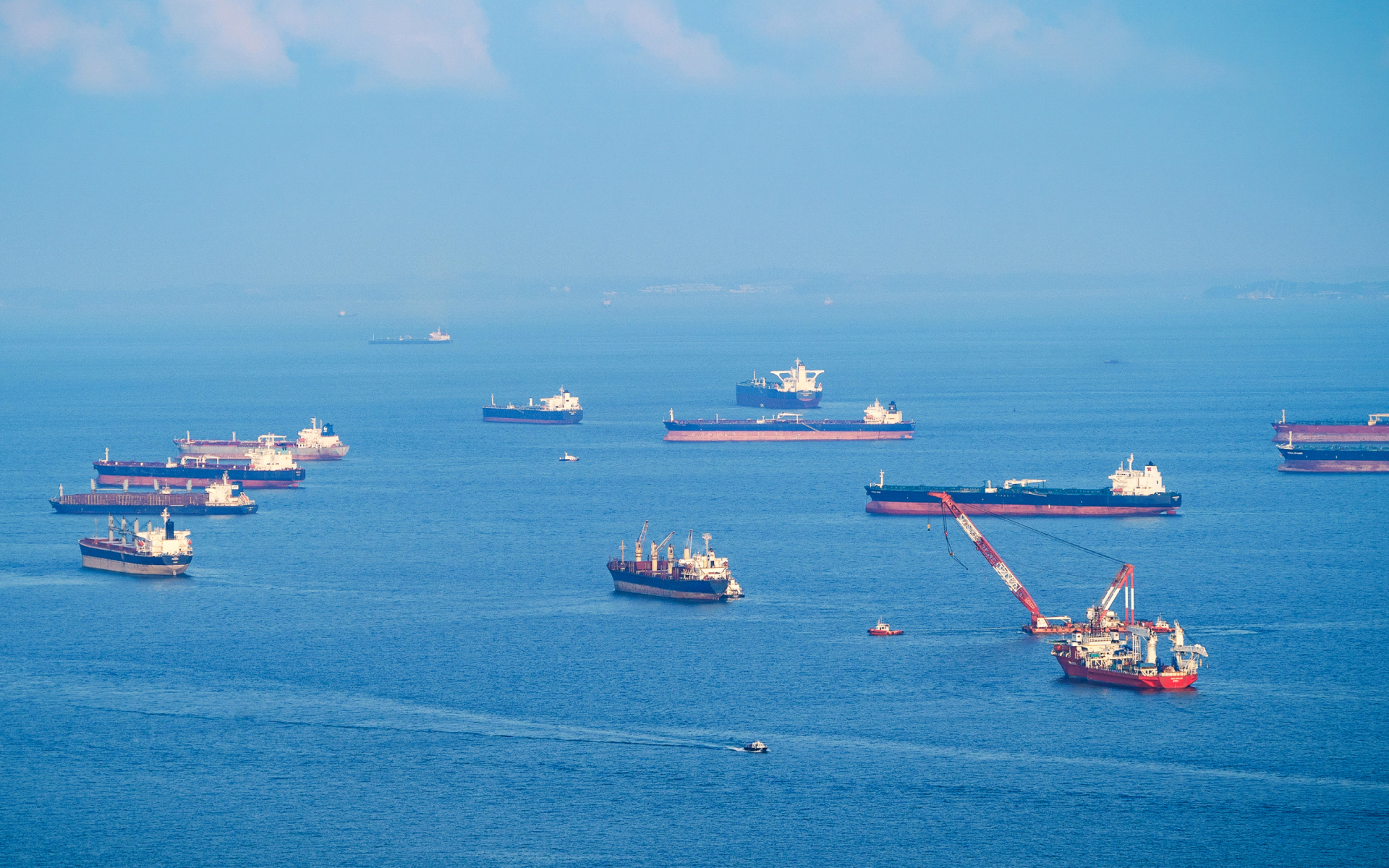As the maritime industry continues to evolve under increasing regulatory pressure, decarbonisation has become a top priority. With a variety of compliance frameworks reshaping how we approach sustainability, it’s crucial to have the right tools to stay compliant while driving operational efficiency.
At Sea, we’re pleased to share that we’ve expanded our carbon management tools to support FuelEU Maritime. You can now calculate and track estimated penalties at voyage level, alongside your EU ETS costs – all in one place.
Here’s how the update works, and how it supports better decision-making around fuel use, routing and compliance.
What is FuelEU Maritime?
FuelEU Maritime is a new regulation aimed at reducing greenhouse gas emissions in the maritime sector. This regulation sets limits on the carbon intensity of fuel consumed during voyages, to encourage the adoption of low-carbon fuels.
It applies to ships over 5,000 gross tonnage (GT) operating in EU/EEA ports and voyages between EU ports, partially covering voyages involving third-country ports, with Companies failing to meet these limits a risk of facing penalties.
How does FuelEU impact the industry?
FuelEU Maritime introduces a new level of accountability and cost for maritime operations. As companies seek to comply with the GHG intensity limits set by the regulation, effective management of fuel consumption and carbon emissions becomes critical. While this brings new challenges, it also creates an opportunity for shipping companies to optimise operations and reduce emissions, ultimately driving down costs and improving sustainability.
Simplifying FuelEU Maritime compliance
In response to the growing need for greater transparency and control over carbon emissions, we’ve integrated a Carbon Penalty calculation into our existing carbon management tools. This allows you to easily track, manage, and calculate the penalties associated with FuelEU compliance for each voyage.
The new feature includes a detailed breakdown table, displaying fuel consumption categorised by fuel grade for both at-sea and in-port operations. This provides the insights you need to assess where improvements can be made to reduce penalties and optimise fuel use.
How is the FuelEU penalty calculated?
The penalty is calculated using a straightforward method.
A predefined penalty rate per metric tonne is applied to each fuel type. The total penalty for a voyage is determined by multiplying the penalty rate by the respective fuel consumption for each fuel grade.
The total penalties are then summed up across all fuel types, providing a clear, consolidated penalty figure.
Key updates and benefits:
- FuelEU penalty breakdown: A new section in the carbon section of the main page shows a detailed breakdown of FuelEU penalties, providing full visibility of carbon-related costs for each voyage.
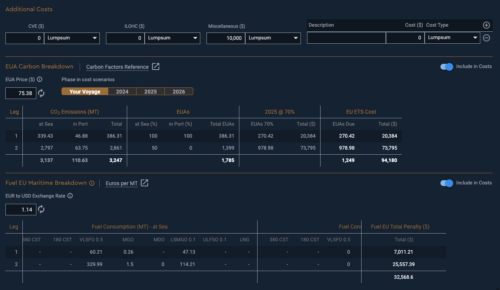
- Summary and comparison pages: FuelEU penalties are incorporated into both the summary and comparison pages, helping you track total costs and easily compare emissions and penalty estimates across different voyages.
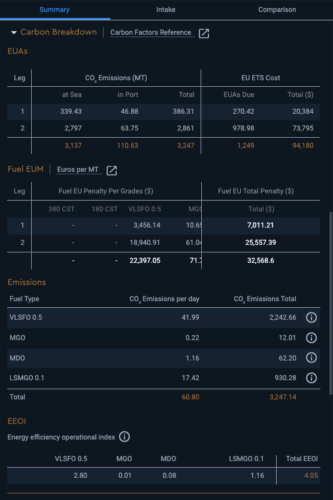
- Exports with updated FuelEU penalty sections: Voyage estimation exports, including the summary and comparison exports, now feature FuelEU penalty sections, providing a comprehensive overview for deeper analysis.
- Customisation options: The FuelEU Maritime breakdown toggle is disabled by default, giving you the flexibility to enable it only when you want to include the FuelEU penalties in your calculations.
The path to sustainability in global maritime trade
FuelEU Maritime is the latest example of how decarbonisation is becoming more operational — and increasingly linked to cost. These changes aren’t just surrounding compliance, they’re shaping decisions about fuel procurement, routing, vessel selection and performance monitoring.
With this update, Sea provides users with more control over those decisions. It helps users quantify carbon exposure, develop mitigation strategies, and make informed selections. At Sea, we’re committed to helping our clients meet their sustainability requirements and these updates are just a part of this ongoing effort.
To learn more about Sea and our carbon solutions, click here.
Share this article
Don’t miss the latest news and insights - subscribe to our newsletter
For press enquiries, please email news@sea.live

